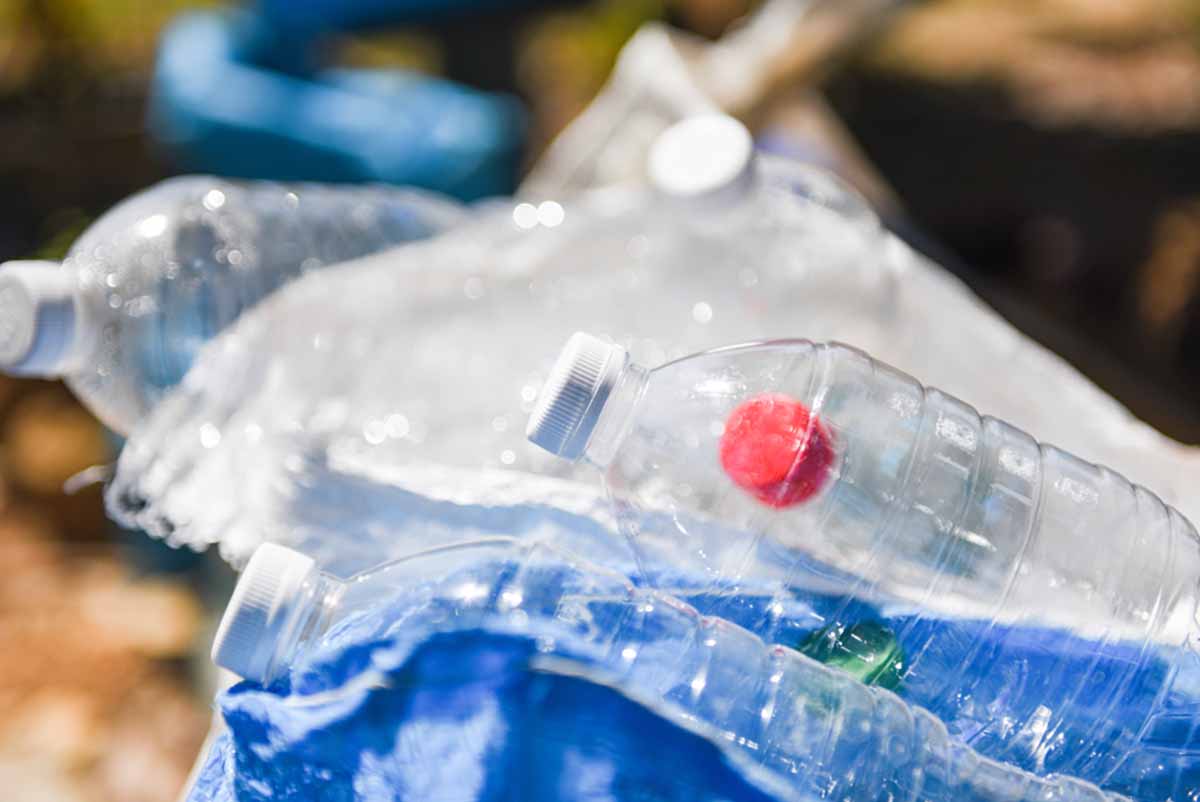
Two university teams developed processes using electromagnetic waves and engineered wastewater bacteria to address plastic pollution. | Poring Studio/Shutterstock
University researchers have come up with two new methods to break down plastic waste – one for reuse and the other to rid wastewater of microplastics.
At Louisiana State University, chemical engineering professor Kerry Dooley and James Dorman, program manager with the U.S. Department of Energy and former LSU chemical engineering professor, combined electromagnetic induction heating and special magnetic materials and catalysts to break down HDPE, LDPE and PS for use in making new plastics.
The electromagnetic waves melt the plastics from the inside out, using a lower temperature than pyrolysis methods to break polymers down to the molecular level, the researchers said. As a result, the process requires less energy and produces much smaller amounts of greenhouse gases.
Their method can also handle food residue and other contaminants, the researchers said.
At the University of Waterloo in Ontario, Canada, researchers engineered wastewater bacteria to break down PET fragments. They added DNA to several species of bacteria that are found in wastewater.
“Think of these bacteria that already exist in water systems to clean up microplastics as biorobots that can be programmed to get the job done,” said co-author Marc Aucoin, a professor in the Department of Chemical Engineering. “Microplastics in water also enhance the spread of antibiotic resistance, so this breakthrough could also address that concern.”
The researchers used a process referred to as “bacterial sex,” where bacteria share genetic material with each other when multiplying. It enables the introduction of a new trait into the target bacteria, in this case giving them the ability to break down microplastics.
The researchers next will use modeling to evaluate the bacteria under various environmental conditions, with the goal of eventually scaling up the technology to treat entire wastewater treatment plants, said co-author Brian Ingalls, a professor in the Department of Applied Mathematics.
Although the group hopes to someday address ocean plastics, “right now, microplastic degradation in wastewater treatment plants is a safer application to target. Many of these facilities are already designed to neutralize bacteria in wastewater, which would kill any engineered bacteria prior to discharging water back into the environment, ” said co-author Aaron Yip, a doctoral candidate in the Department of Chemical Engineering.
Their study was published in the Microbial Biotechnology journal in September.
Multiple methods of processing and recycling plastics have been studied in recent years. Recent examples include using sunlight to recycle black plastics and a process to vaporize PE and PP into their feedstock monomers. In addition, a team led by U.S. National Renewable Energy Laboratory researchers is working to provide baseline data to make studying plastic recycling more efficient.

